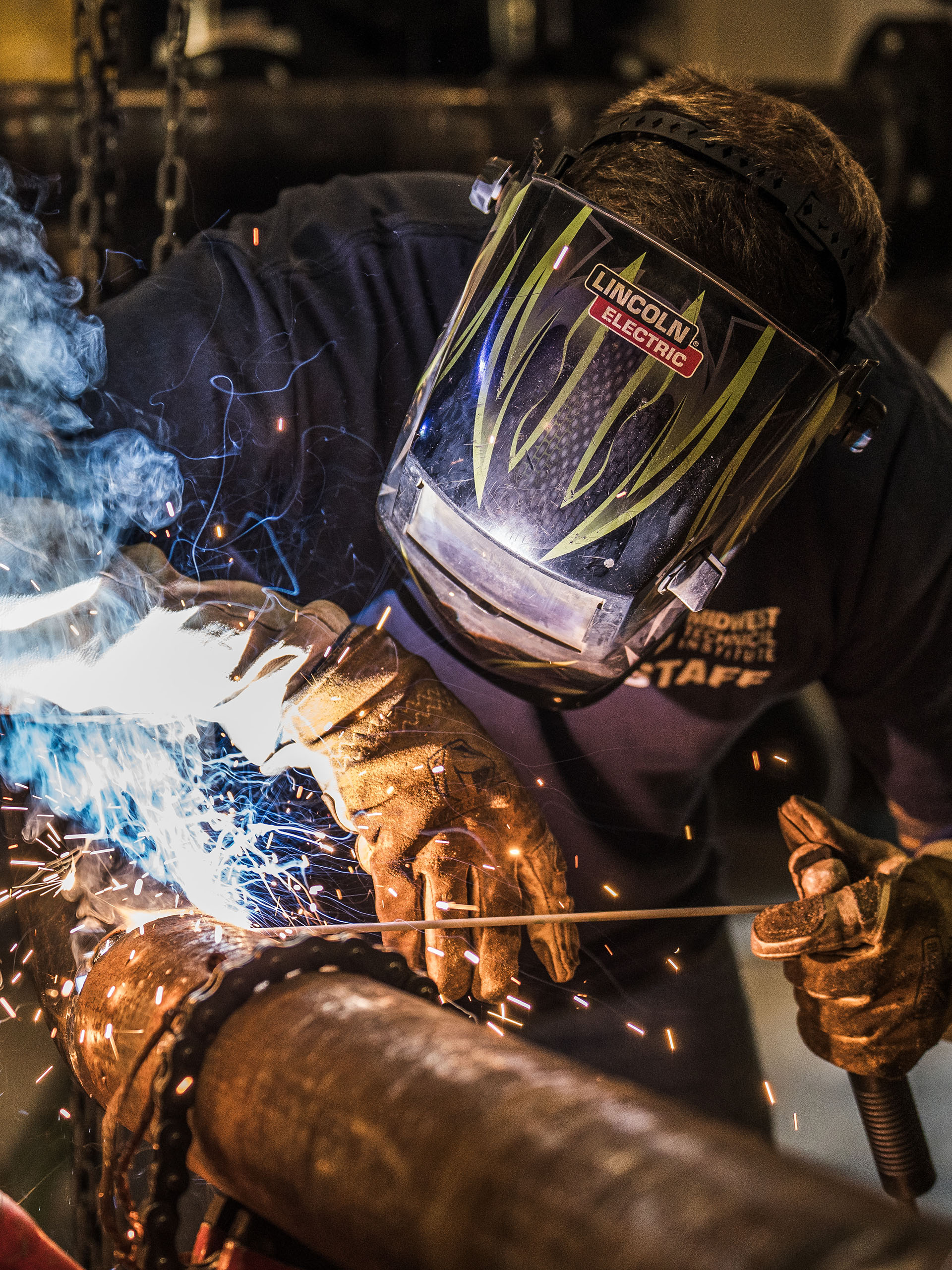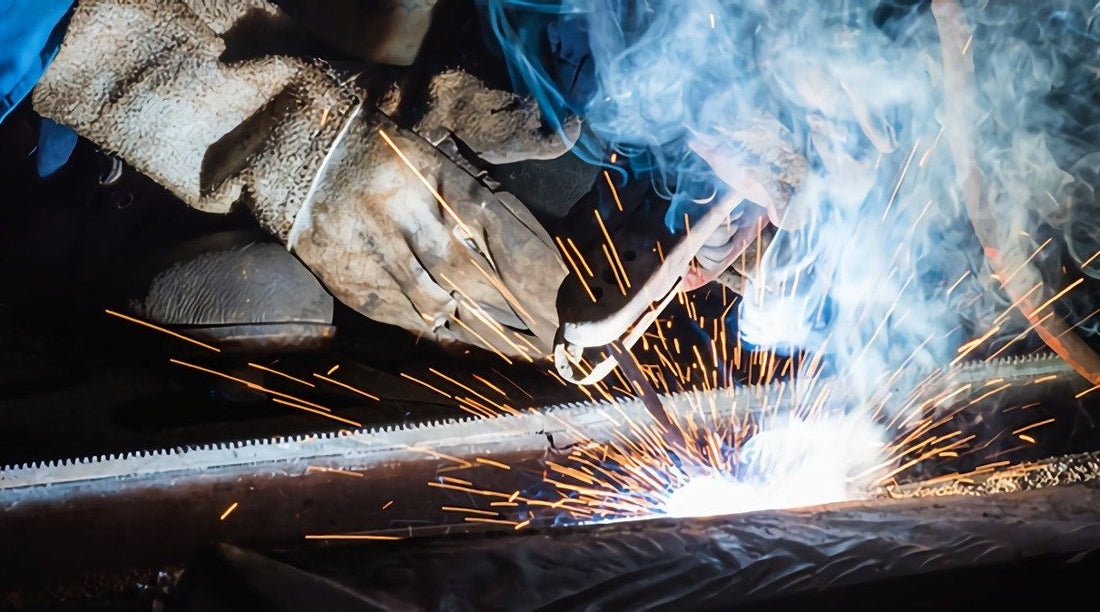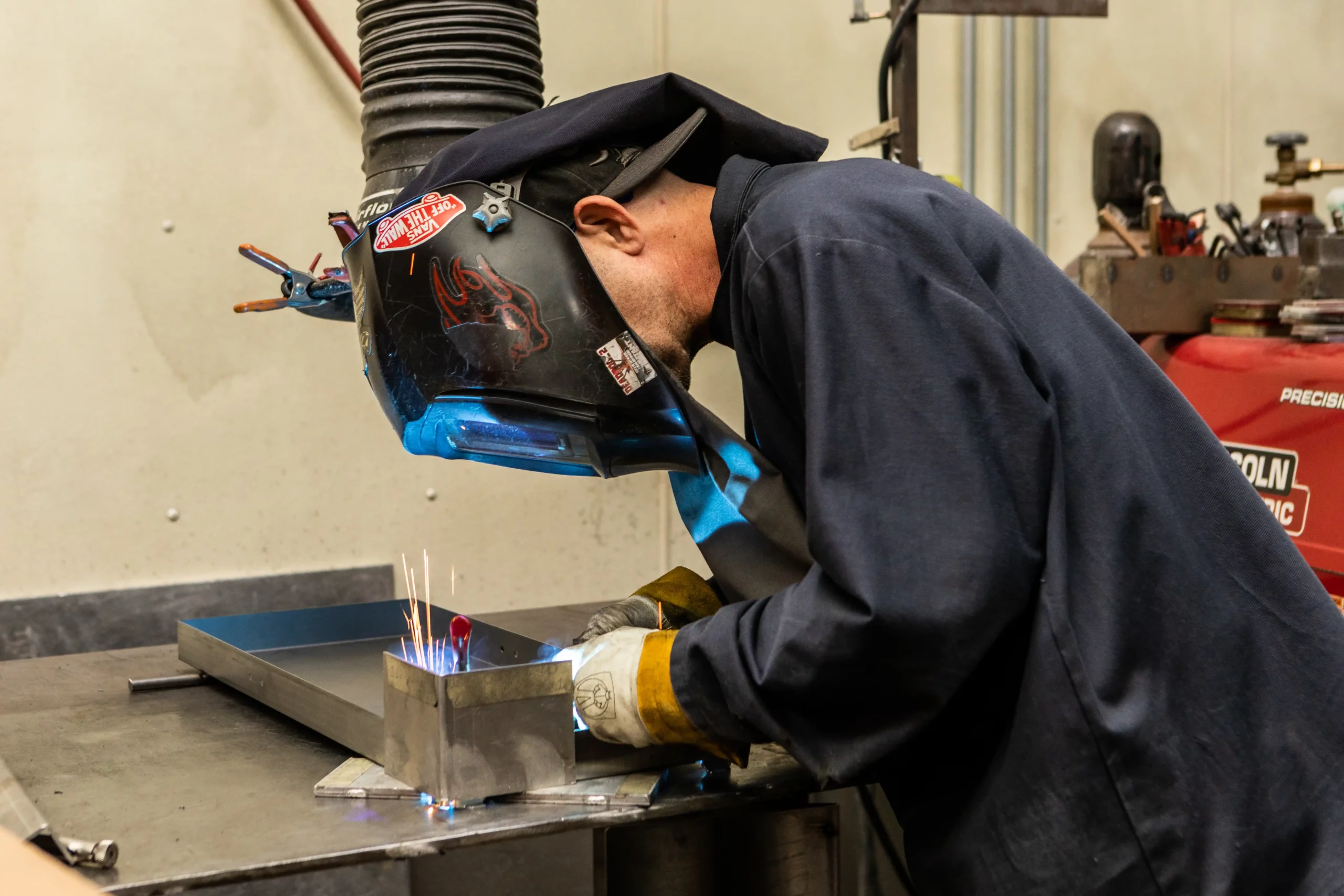Common Welding Repair Issues and Just How to Address Them Successfully
Welding repairs often encounter a variety of problems that can jeopardize the integrity of the end product. Typical problems include insufficient penetration, porosity, and misalignment, amongst others. Each problem provides distinct challenges that call for details techniques for resolution. Comprehending these concerns is crucial for welders aiming to improve their abilities and results. This conversation will check out these common welding repair concerns and effective approaches to resolve them.
Insufficient Penetration
Poor infiltration takes place when the weld steel fails to totally fuse with the base material, leading to weak joints and possible architectural failings. This concern often stems from not enough warmth input, incorrect electrode angle, or improper welding rate. Welders might run into poor penetration due to a mistake of the essential specifications for a details product thickness or kind. In addition, contamination on the base product's surface can prevent reliable bonding, intensifying the problem. To deal with inadequate infiltration, welders should assure proper settings on their devices and preserve a clean job surface. Routine evaluation of welds is recommended to determine any kind of deficiencies early, enabling timely corrections and the prevention of jeopardized structural stability in bonded settings up.
Porosity
Porosity is an usual issue in welded joints that shows up as small gas bubbles trapped within the weld steel. This flaw can jeopardize the integrity of the weld, resulting in lowered toughness and potential failure under stress. Montana Mobile Welding and Repair Belgrade Welding. Porosity commonly emerges from contamination, dampness, or inappropriate welding techniques, which allow gases to run away right into the molten weld pool. To attend to porosity, welders should guarantee appropriate surface area prep work, preserve a tidy functioning atmosphere, and use ideal welding criteria. Additionally, picking the right filler product and shielding gas can mitigate gas entrapment. Regular assessment and screening of welds can help identify porosity early, guaranteeing timely corrective activities are taken, thus maintaining the top quality and dependability of the welded framework
Imbalance
Misalignment in welding can occur from numerous aspects, consisting of improper configuration and thermal development. Comprehending the source is necessary for reliable resolution. Several adjustment strategies are available to realign parts and ensure structural honesty.
Causes of Misalignment
Welding misalignment frequently originates from a selection of underlying issues that can jeopardize structural honesty. One key reason is improper fit-up of parts prior to welding, which can result in voids and unequal surfaces. Variants in thermal expansion during the welding procedure can also result in distortion, especially if the materials being signed up with have different coefficients of expansion. Additionally, inadequate fixturing and securing may fail to hold parts safely in location, causing movement throughout welding. Badly maintained devices, consisting of welding makers and tools, may introduce incongruities in the weld bead, further adding to imbalance. Driver mistake, stemming from inadequate training or experience, can likewise play a substantial function in creating misaligned welds.

Improvement Methods Offered
Dealing with misalignment properly needs a mix of rehabilitative techniques tailored to the particular concerns handy. One common method is using jigs or components to hold parts in the correct setting throughout welding, making certain consistent positioning. Additionally, preheating the materials can aid decrease distortion and enhance fit-up. For significant imbalance, mechanical adjustment strategies, such as utilizing hydraulic jacks or clamps, can be utilized to deal with the setting prior to welding. Post-weld heat treatment might additionally be necessary to relieve tensions created by misalignment. Lastly, mindful evaluation and adjustment throughout the setup stage can protect against imbalance concerns from becoming considerable problems, advertising a smoother welding process and enhancing total structural integrity.
Distortion
Distortion is an usual obstacle in welding that can develop from different aspects, including irregular heating & cooling. Comprehending the reasons of distortion is necessary for applying reliable avoidance methods. Addressing this concern not only improves architectural stability but likewise boosts the overall quality of the weld.
Root causes of Distortion
When based on the intense warm of welding, products frequently undertake adjustments that can cause distortion. This phenomenon mostly occurs from thermal growth and contraction throughout the welding process. As the weld location warms up, the material broadens; upon cooling, it contracts, which can develop interior anxieties. Additionally, irregular heating throughout a workpiece can aggravate these stress and anxieties, resulting in warping or bending. The sort of product also plays a substantial function; metals with varying thermal conductivity and coefficients of growth may respond differently, resulting in unpredictable distortions. In addition, inadequate joint layout and insufficient fixturing can add to imbalance throughout this link welding, increasing the chance of distortion. Comprehending these causes is vital for efficient welding repair service and prevention techniques.
Avoidance Techniques
Reliable avoidance methods for distortion throughout welding concentrate on managing warm input and making certain proper joint layout. Maintaining a constant heat input helps to reduce thermal growth and contraction, which can result in distortion. Utilizing methods such as pre-heating the workpiece can additionally lower the temperature level slope, advertising consistent heating. Additionally, selecting suitable joint designs, such as T-joints or lap joints, can enhance stability and lower anxiety focus. Carrying out proper fixturing to protect the workpieces in position better help in maintaining placement during the welding process. Lastly, staggered welding sequences can disperse heat much more equally, protecting against localized distortion. By applying these methods, welders can considerably decrease the likelihood of distortion and improve the general quality of their welds.
Cracking
Breaking is an usual concern come across in welding fixings, often arising from different variables such as improper cooling prices, product choice, or inadequate joint prep work. The occurrence of fractures can substantially endanger the integrity of the weld, resulting in prospective failings during operation. To resolve this issue, welders have to initially analyze the source, making certain that materials work and appropriately chosen for the details application. Furthermore, regulating the air conditioning rate throughout the welding process you can try here is crucial; quick air conditioning can cause stress and anxiety and result in fracturing. Appropriate joint design and preparation additionally add to reducing the danger. Implementing these techniques can enhance weld top quality and toughness, ultimately lowering the chance of breaking in ended up weldments.

Incomplete Fusion
A substantial problem in welding repairs is incomplete combination, which happens when the weld metal does not appropriately bond with the base material or previous weld passes - Fabrication. This problem can result in weak points in the joint, possibly endangering the stability of the bonded framework. Variables adding to incomplete fusion consist of not enough warm input, improper welding method, and contamination of the surfaces being joined. To resolve this concern efficiently, welders must assure proper pre-weld cleaning and surface prep work, along with change their welding parameters to attain appropriate penetration and blend. Routine examination throughout the welding procedure can likewise assist recognize incomplete fusion early, enabling timely restorative measures to enhance the general quality of the weld
Overheating
While welding repair work can boost architectural stability, overheating presents a significant difficulty that can cause product deterioration. Too much heat during welding can change the mechanical buildings of steels, causing lowered toughness, raised brittleness, and bending. This sensation is especially vital in high-stress applications where structural reliability is extremely important. Recognizing overheating can entail aesthetic inspections for discoloration or distortion, as well as monitoring temperature level during the welding process. To mitigate the risks connected with getting too hot, welders must utilize proper methods, such as managing warm input, changing traveling rate, and utilizing ideal filler products. Furthermore, implementing pre- and post-weld heat therapies can aid restore material buildings and enhance the total top quality of the repair, ensuring long-term efficiency and safety.
Frequently Asked Questions
What Are the Usual Indications of a Welding Problem?

Just How Can I Check My Welds for High quality?
To check welds for top quality, one can make use of aesthetic evaluations, ultrasonic testing, and radiographic methods. Each method assures architectural stability, determines flaws, and confirms adherence to defined standards, ultimately improving the dependability of the welded joints.
What Safety and security Precautions Should I Take While Welding?
When welding, one should prioritize safety and security by wearing ideal personal safety equipment, ensuring appropriate ventilation, safeguarding flammable materials away, keeping a tidy work area, and recognizing environments to avoid mishaps and injuries.
Can I Fix a Weld Without Remodeling the Entire Joint?
Repairing a weld without redoing the whole joint is possible, depending upon the damage (Montana Mobile Welding and Repair Fabrication). Strategies such as grinding, adding filler material, or using a welding process can properly attend to details problems while preserving the bordering structure
What Tools Are Vital for Effective Welding Services?
Crucial tools for effective welding repair services consist of a welding machine, wire brush, grinder, safety equipment, clamps, and filler materials. Each tool plays a crucial role in ensuring top quality and security throughout the repair service procedure. Porosity generally occurs from contamination, wetness, or improper welding techniques, which permit gases to get away into the molten weld pool. Poorly maintained tools, consisting of welding machines and devices, may introduce variances in the weld grain, additional adding to imbalance. When subjected to the intense warmth of welding, products commonly go through changes that can lead to distortion. Fracturing is an usual problem come across in welding repair services, commonly resulting from various factors such as inappropriate air conditioning rates, product selection, or poor joint prep work. A significant issue in welding repairs is insufficient combination, which occurs when the weld steel does not adequately bond with the base material or previous weld passes.